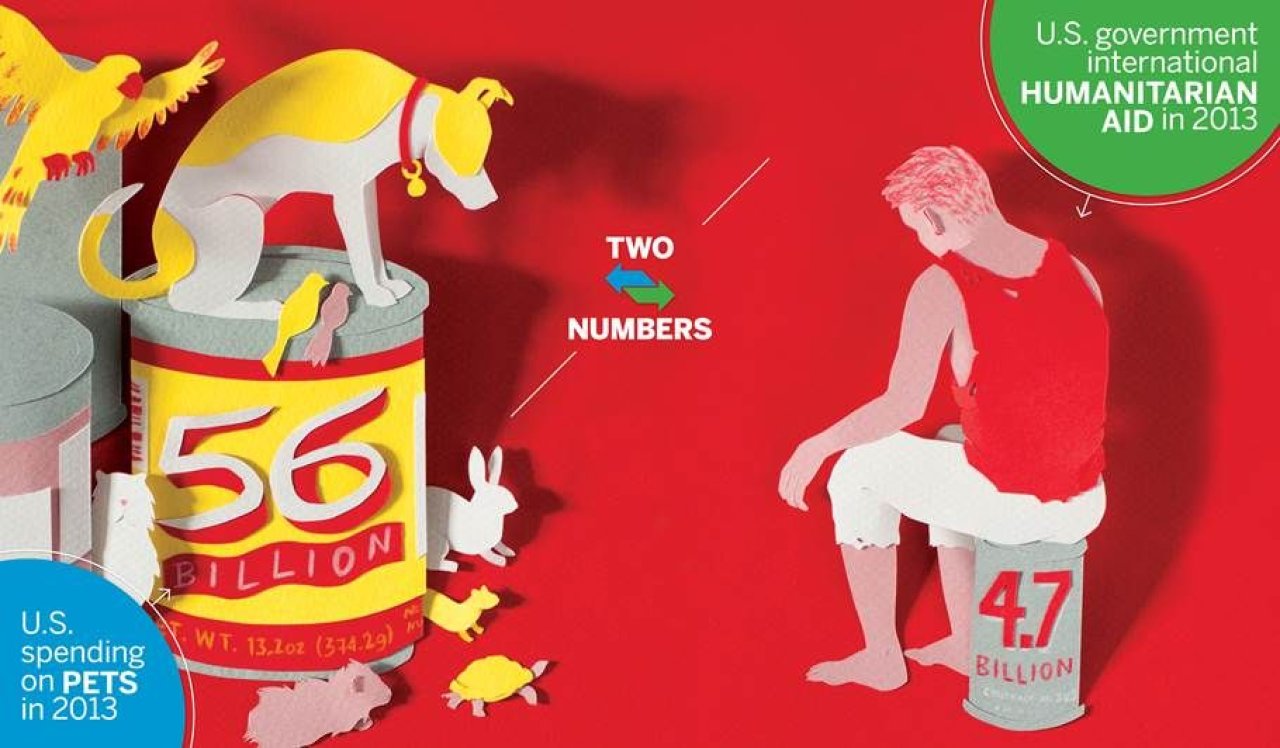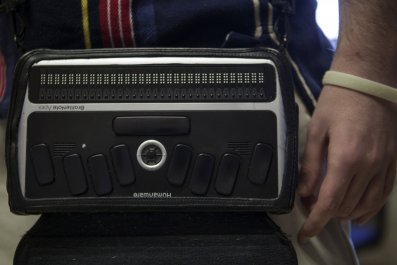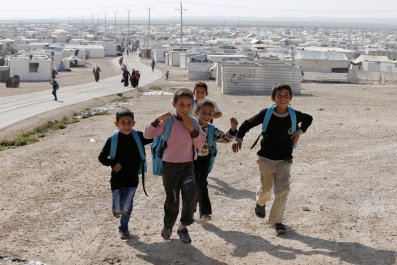U.S. citizens are known to be among the most generous people in the world. But much of that charity begins and ends at home. The U.S. government budgets just $2 out of every $1,000 of government funds for global humanitarian aid. That includes things like emergency services, clothing, medicine and food to alleviate immediate suffering, rather than projects aiming for long-term change.
Since the U.S. is such a wealthy country, that still adds up to almost $5 billion a year. But with more than a billion people worldwide living on less than $1 a day—and with problems like Ebola, typhoons, earthquakes and armed conflicts that have driven millions from their homes—that sum is nowhere near enough to meet needs around the world.
Americans make large private donations, but most of that is focused on domestic needs. A third of private charity goes to religious institutions, and significant amounts go to things like medical research, education, the arts and other U.S.-based causes. There aren't good statistics on how much goes to humanitarian needs abroad, but a fair estimate puts private humanitarian giving to causes outside U.S. borders at less than what the government spends.
Add the amount individual Americans spend on humanitarian aid abroad with what the government spends and the total last year was probably less than $10 billion, well under a fifth of what Americans spend on their pets: about $56 billion a year.
Lots of other money goes abroad, of course. The U.S. government spends roughly three times as much on military aid as on humanitarian aid, and significant sums go to other international programs as well, such as long-term projects that aren't included in the humanitarian aid total. According to the Congressional Research Service, total foreign aid in 2013 was about $50 billion, or 1.5 percent of the federal government budget. Most of that goes to Israel, Afghanistan, Pakistan, Iraq, Egypt, Jordan and African nations like Nigeria, Tanzania, South Africa and Kenya.
That's a lot less than most Americans believe the government spends. According to a Kaiser Foundation poll, a majority of Americans think foreign aid accounts for more than one-quarter of the federal budget. In fact, it's less than what they are spending on Kibbles 'n Bits and doggy pedicures.


























